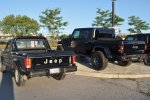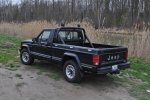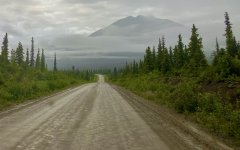I’m willing to bet a months retirement check that had the 70 series Landcruiser been allowed in the US decades ago, Jeep would no longer exist.
I'll take that bet.
The 70 series is not what many people think, and it would never be accepted by US consumers.
An auto journalist friend of mine flew to Australia a couple of years ago, and Toyota lent him a brand new 78 series troopy with the 4.5l v8 Turbo diesel.
This is a $120,000 vehicle that has crank windows, vinyl floors, no A/C, no cruise, no bluetooth, no backup camera, no screen, no ABS and basically anything else you can think of. You might think that's a good thing, but not for $120k it's not.
You have to wring it's neck to sit on even 70 mph, and the noise in the driving cabin is atrocious.
When I did my lap of Australia last year we travelled with a lot of people in Troopies, 76s and 79s. On just a regular old dirt road doing 50 or 60 mph, they would drive with headphones in. The noise in the cabin was so loud they couldn't even talk to their partner sitting next to them.
Meanwhile Katie and I in the Gladiator (which was cheaper) had leather heated seats, A/C, bluetooth and were in relative silence.
In terms of offroading the 70 series is designed to carry enormous loads (you can increase the legal weight limit to 9000 lbs in Australia), but that is about all. The leaf spings in the rear seriously limit articulation, and they were downright sketchy on climbs and anything technical. It's no wonder the Aussies always have such dramatic videos - you only need to climb basic stuff to get massive wheel lifts galore.
The 70 series is a tractor that stopped getting better in about 1985 - don't get me wrong, it's a very good tractor, but it's a tractor.
Yes, they're fantastic on seriously remote roads in Africa (with African safety standards and expectations of comfort).
No, they wouldn't sell well in the USA.
-Dan



